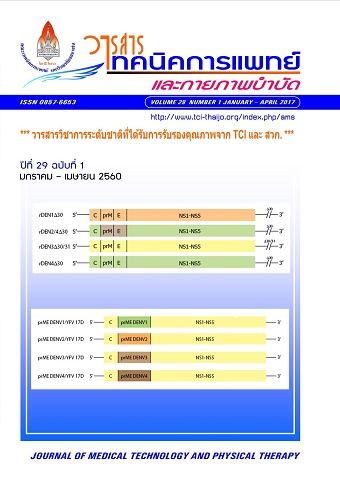Cardiopulmonary responses in supine and prone positioning among prematurity at Srinakarind hospital
Main Article Content
Abstract
Positioning is one of the well-known interventions among prematurity. Previous studies found conflicting results regarding which position benefited the babies the most in terms of cardiopulmonary function. Additionally, there are few studies comparing the cardiopulmonary responses between supine and prone position in prematurity in Thailand. Thus, the aim of this study was to compare the effect of supine and prone positioning on heart rate (HR), respiratory rate (RR) and transcutaneous oxygen saturation (SpO2) among premature babies who were admitted to Srinakarind hospital. This study was a crossover design study. Twenty non-oxygen dependent babies of gestational age less than 32 weeks were eligible for entry into the study. On two successive days, infants were studied in both supine and prone positions. Each position lasted for three hours. The initial position was randomly assigned and supine and prone positions were subsequently alternated. RR was measured by counting the chest wall movement in one minute, while HR and SpO2 were measured by a pulse oximeter ((ESCORTΙΙ, US). The results showed that there were no significant differences in HR and SpO2 between supine and prone position (p=0.63 andp=0.25 respectively). However, there was a significant increase in RR in supine position when compared with prone position (p=0.04). This initial result suggested that the supine position provided a slightly increase in respiratory rate when compared with the prone position. However, this difference was not clinically significant. Thus, prematurity babies could be nurtured in both supine and prone positions but should be monitored changes of cardiopulmonary responses in order to achieve the optimal safety.

